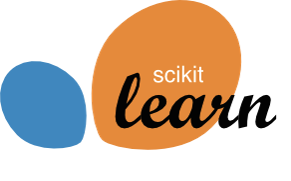TECHNICAL COMMITTEE / July 4, 2019
Technical Committee
July 4, 2019
Priority list for the consortium at Inria, year 2019–2020
From the discussion during the technical committee, the scikit-learn consortium at Inria defined the following list of priorities for the coming year:
-
- Continue effort to help with project maintenance to keep the target to release twice a year.
- Development of the “inspect” module:
- Help finalize the pull requests for the newly introduced methods for model inspections.
https://github.com/scikit-learn/scikit-learn/issues/14969 - Better interoperability with pandas dataframe and scikit-learn pipeline, in particular with the feature names.
https://github.com/scikit-learn/scikit-learn/pull/14028 - Document with User Guide and examples to give intuitions, insights, caveats of the different methods.
- Cross-reference more bleeding-edge inspection tools from external libraries such as SHAP and ELI5 from the documentation and examples in scikit-learn. Possibly add an example in scikit-learn to compare SHAP values to scikit-learn permutation importances.
- Integrate guidelines on interpretation and uncertainty of coefficients of linear models in scikit-learn as a scikit-learn example or tutorial in the main repo.
- Help finalize the pull requests for the newly introduced methods for model inspections.
- Implementation of Poisson, Gamma, Tweedie regression losses for linear models and gradient boosting trees.
https://github.com/scikit-learn/scikit-learn/pull/14300 - Improvement of machine learning pipeline with feature names.
- Help finalize the missing features for the new implementation of Gradient Boosting Trees (i.e., native support for missing values, categorical data, and sparse data).
- Continue effort on benchmark and compliance tests:
- Integration of ONNX models.
- Make it easier to reuse the scikit-learn benchmark suite to compare with alternative implementation of the models from DAAL and RAPIDS.
- Develop a new resampler meta-estimator for imbalanced classification problems, by working with the community on SLEP005.
- Propagation of feature names (e.g. within scikit-learn pipeline), by working with the community on SLEP008.
- Improve documentation with extra-examples: time series applications, model inspection, quantification of predictive uncertainty and uncertainties on linear model coefficients, “anti-pattern” examples.
https://github.com/scikit-learn/scikit-learn/issues/14081 - Evaluate interoperability with other type of array (e.g. dask arrays and CuPy arrays) for some preprocessing methods, pipeline / column transformer, cross-validation and parameter search. Possibly by leveraging the newly introduced __array_function__ protocol.
We recall the list of priorities of the previous year which would be considered for this year as well. Note that some of these points are ongoing work:
-
- Tools to compare validity of model between scikit-learn versions.
- Confidence interval for predictions: look at the bootstrapping, and review literature on conformal predictions (in collaboration with Léo Dreyfus-Schmidt at Dataiku who will work on benchmarking the literature). See https://arxiv.org/abs/1604.04173 and https://cdsamii.github.io/cds-demos/conformal/conformal-tutorial.html for instance.
- Quantile regression for linear and GBRT models.
- Better missing data handling.
- Better categorical encoding.
- Callback and logging (interruption) monitor progress.
- Organise monthly technical sprint.
